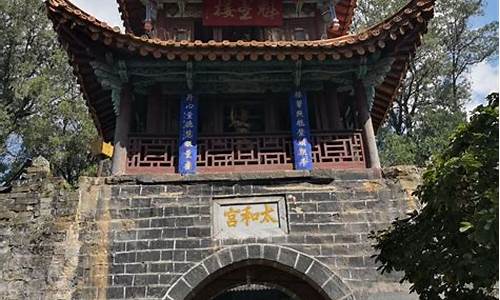您现在的位置是: 首页 > 景点大全 景点大全
新手旅游攻略怎么做的好呢英语_新手旅游攻略怎么做的好呢英语翻译_1
佚名 2024-06-11 人已围观
简介新手旅游攻略怎么做的好呢英语_新手旅游攻略怎么做的好呢英语翻译感谢大家在这个新手旅游攻略怎么做的好呢英语问题集合中的积极参与。我将用专业的态度回答每个问题,并尽量给出具体的例子和实践经验,以帮助大家理解和应用相关概念。1.设计一个旅游指南的英文2.去旅游前,需要做什么事,用英语回答设计一个旅游指南的英文设计一个旅游指
感谢大家在这个新手旅游攻略怎么做的好呢英语问题集合中的积极参与。我将用专业的态度回答每个问题,并尽量给出具体的例子和实践经验,以帮助大家理解和应用相关概念。
1.设计一个旅游指南的英文
2.去旅游前,需要做什么事,用英语回答

设计一个旅游指南的英文
设计一个旅游指南的英文是Design a travel guide。旅游指南本书是“郑州市社区科普大学系列教材”之一。全书共分九讲,从旅游出行前的准备、旅行的技巧、旅行安全常识、出境旅游常识、旅游维权等多个方面介绍了旅游的相关知识。
本书立足于大众化,讲求方便实用,同时也融入了以满足游客个性化需求为导向的“新旅游”思想,以介绍国内旅游为主,也介绍了出境旅游的基本知识,注重旅游的品质,希望能够给市民提供全方位的旅游指导。
本书既能满足喜欢旅游的朋友了解更多旅游信息的需要,又能给有旅游愿望而暂无旅游经验的朋友提供必要的帮助。
“旅”是旅行,外出,即为了实现某一目的而在空间上从甲地到乙地的行进过程;“游”是外出游览、观光、**,即为达到这些目的所作的旅行。二者合起来即旅游。所以,旅行偏重于行,旅游不但有“行”,且有观光、**含义。
中央纪委国家监委网站的相关统计数据显示,“中秋国庆期间违反中央八项规定精神问题监督举报曝光专区”近三年中通报了989起案例。
去旅游前,需要做什么事,用英语回答
Shanghai, Hu for short, is a renowned international metropolis drawing more and more attention from all over the world. Situated on the estuary of Yangtze River, it serves as the most influential economic, financial, international trade, cultural, science and technology center in East China. Also it is a popular destination for visitors to sense the pulsating development of the country.
In addition to its modernization, the city's multicultural flair endows it with a unique glamour. Here, one finds the perfect blend of cultures, the modern and the traditional , and the western and the oriental. New skyscrapers and old Shikumen together draw the skyline of the city. Western customs and Chinese traditions intertwined and formed Shanghai's culture, making a visitor's stay truly memorable.
Shanghai is split in two by the Huangpu River. The most basic division of the area isPuxi West of the river, versus Pudong , East of the river. Both terms can be used in a general sense for everything on their side of the river, but are often used in a much narrower sense where Puxiis the older (since the 19th century) city center and Pudong the mass of new (since the 1980s) high-rise development across the river.
The Bund (外滩 Wàitān) The colonial riverside of old Shanghai, has dozens of historical buildings lining the Huangpu River, which once housed numerous foreign banks and trading houses. The riverfront walkway has recently undergone a major reconstruction and reopened to the public in March 2010.
Changning (长宁区; Chángníngqū) Hongqiao International Airport sits here in addition to the Shanghai Zoo. Changning is a very large, residential district but in recent years has seen more commercial and entertainment hubs develop, especially the area around Zhongshan Park.
Shanghai (Luwan, Xuhui)Leafy district once known as the Paris of the East, includes the refurbished shikumen houses of Xintiandi and Shanghai Stadium, one of Shanghai's most rich and vibrant neighborhoods. The Xujiahui shopping district is home to five large shopping malls.
Shanghai is a fascinating mix of East and West. It has historic shikumen houses that blend the styles of Chinese houses with European design flair, and it has one of the richest collections of Art Deco buildings in the world. As there were so many concessions (designated districts) to Western powers during the turn of the 20th century, in many places the city has a cosmopolitan feel. There is everything from classic Parisian style, to Tudor style buildings that give an English flair and 1930s buildings reminiscent of New York or Chicago.
There is a saying that goes, "Shanghai is heaven for the rich, hell for the poor," People from all over China flock to Shanghai — everyone from farmers seeking jobs in manual labour to university graduates seeking to start a career or wanting to live in a cool up-tempo city. Even well-off people, though, complain that buying a home is becoming impossible; prices have skyrocketed in the last few years.
Shanghai is one of the main industrial centers of China, playing a key role in China’s heavy industries. A large number of industrial zones are backbones of Shanghai's secondary industry.
Hongkou Home of Lu Xun Park as well as a football stadium, once home to Shanghai's substantial Jewish population in the first half of the 20th century.
Huangpu excluding the Old CityThe traditional center of Shanghai, home to People's Square, People's Park, the Shanghai Museum, Shanghai Urban Planning Exhibition Hall, City Hall, and the city's largest metro station, underneath a large underground shopping mall. Adjacent to People's Square is the East Nanjing Road pedestrian mall.
Jing'an District Home to Jing'an Temple, this area has been continuously inhabited since the 3rd century AD. The commercial district of West Nanjing Road extends from the center of Jing'an to People's Square.
Old City Home of Yu Garden, the City God Temple and Huxingting Tea House, this is the historic Chinese area of the city, where much of the old wooden architecture of ancient Shanghai is still preserved.
Yangpu Where Fudan University and Tongji University are located. Also contains the excellent and spacious Gongqing Forest Park. For shoppers, Wujiaochang is situated here.
Zhabei Zhabei is an older district of Shanghai and the location of the Shanghai Railway Station. There is a large park, Daning-Lingshi, north of the station, as well as the Shanghai Circus.
While Shanghai has been around as a village since the Song Dynasty, a thousand years or so ago, it only rose to prominence after China lost the First Opium War in 1842. Shanghai was one of five cities which were opened to trade as treaty Ports. Shanghai grew amazingly after that; until then nearby cities like Hangzhou, Suzhou and Nanjing had been far more important, but today Shanghai is definitely the center of the region.
Eight nations — Germany, France, Italy, Russia, Austria-Hungary, Japan, the United States and the United Kingdom — were granted concessions in Shanghai, areas that they controlled and where Chinese law did not apply. Most of these were jointly administered as the "International Settlement", but the French ran theirs separately. In all of them, the population was mainly Chinese, of course, but the legal system was foreign and the police included many Sikhs and French gendarmes. They were located North of the Chinese city. Today all these areas are considered parts of downtown Shanghai.
1.Go and get some tourist brochures2.Buy some essential commodity3.Get your passport4.Ask for a vacation5.Decide means of transportation6.Get informed of some of the tourist destination7.Prepare your luggage8.Go to the tourist agency for some details
好了,今天关于“新手旅游攻略怎么做的好呢英语”的探讨就到这里了。希望大家能够对“新手旅游攻略怎么做的好呢英语”有更深入的认识,并且从我的回答中得到一些帮助。









